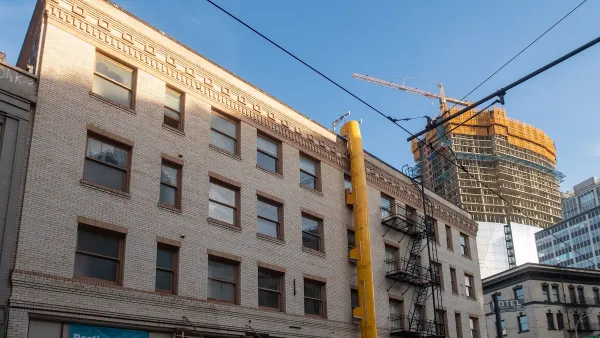Record-high housing costs are motivating households to change cities, states, and even regions in search of cheaper places to live.

The news has been full of talk of future migration and displacement trends in the U.S. driven by climate change. CNBC’s Ana Teresa Sola reports, a migration is already underway, propelled by a different factor: a shortage of affordable housing.
“Last year, consumers moving interstate tended to pick new metropolitan areas where housing costs and competition are less severe, and construction is keeping up with demand, according to a recent Zillow Group analysis of United Van Lines data,” Sola writes. “Homes in those consumers’ new metros cost $7,500 less, on average, compared to the places they left.”
The Zillow analysis found movers are also increasingly relocating to areas with more home listings per resident, which also coincides with markets where it’s more financially feasible for builders to develop new housing stock. For the most part, that’s the South and the Midwest.
“That’s why you’re seeing these relatively more affordable Southern, Midwestern markets rise to the top of the list,” Orphe Divounguy, a senior economist at Zillow, told CNBC. Cities that have both affordability and rapidly expanding job markets—like Charlotte and Raleigh, NC, which have become tech and financial hubs—have double the draw, Divounguy added.
According to the Zillow analysis, which used United Van Lines® data, the ten most moved-to ten cities for inbound movers include Charlotte and Raleigh, NC; Providence, RI; Indianapolis, IN; Orlando and Jacksonville, FL; Nashville, TN. Houston and San Antonio, TX; and Birmingham, AL.
Meanwhile, the cities that had the most net out-bound moves are Chicago, IL; San Diego and Riverside, CA; Cincinnati, OH; Detroit, MI; Boston, MA; Memphis, TN; Oklahoma City, OK; New York and Buffalo, NY.
FULL STORY: ‘Housing affordability is reshaping migration trends,’ economist says. Here’s where people are moving

Planetizen Federal Action Tracker
A weekly monitor of how Trump’s orders and actions are impacting planners and planning in America.

Restaurant Patios Were a Pandemic Win — Why Were They so Hard to Keep?
Social distancing requirements and changes in travel patterns prompted cities to pilot new uses for street and sidewalk space. Then it got complicated.

Map: Where Senate Republicans Want to Sell Your Public Lands
For public land advocates, the Senate Republicans’ proposal to sell millions of acres of public land in the West is “the biggest fight of their careers.”

Maui's Vacation Rental Debate Turns Ugly
Verbal attacks, misinformation campaigns and fistfights plague a high-stakes debate to convert thousands of vacation rentals into long-term housing.

San Francisco Suspends Traffic Calming Amidst Record Deaths
Citing “a challenging fiscal landscape,” the city will cease the program on the heels of 42 traffic deaths, including 24 pedestrians.

California Homeless Arrests, Citations Spike After Ruling
An investigation reveals that anti-homeless actions increased up to 500% after Grants Pass v. Johnson — even in cities claiming no policy change.
Urban Design for Planners 1: Software Tools
This six-course series explores essential urban design concepts using open source software and equips planners with the tools they need to participate fully in the urban design process.
Planning for Universal Design
Learn the tools for implementing Universal Design in planning regulations.
Heyer Gruel & Associates PA
JM Goldson LLC
Custer County Colorado
City of Camden Redevelopment Agency
City of Astoria
Transportation Research & Education Center (TREC) at Portland State University
Camden Redevelopment Agency
City of Claremont
Municipality of Princeton (NJ)





























